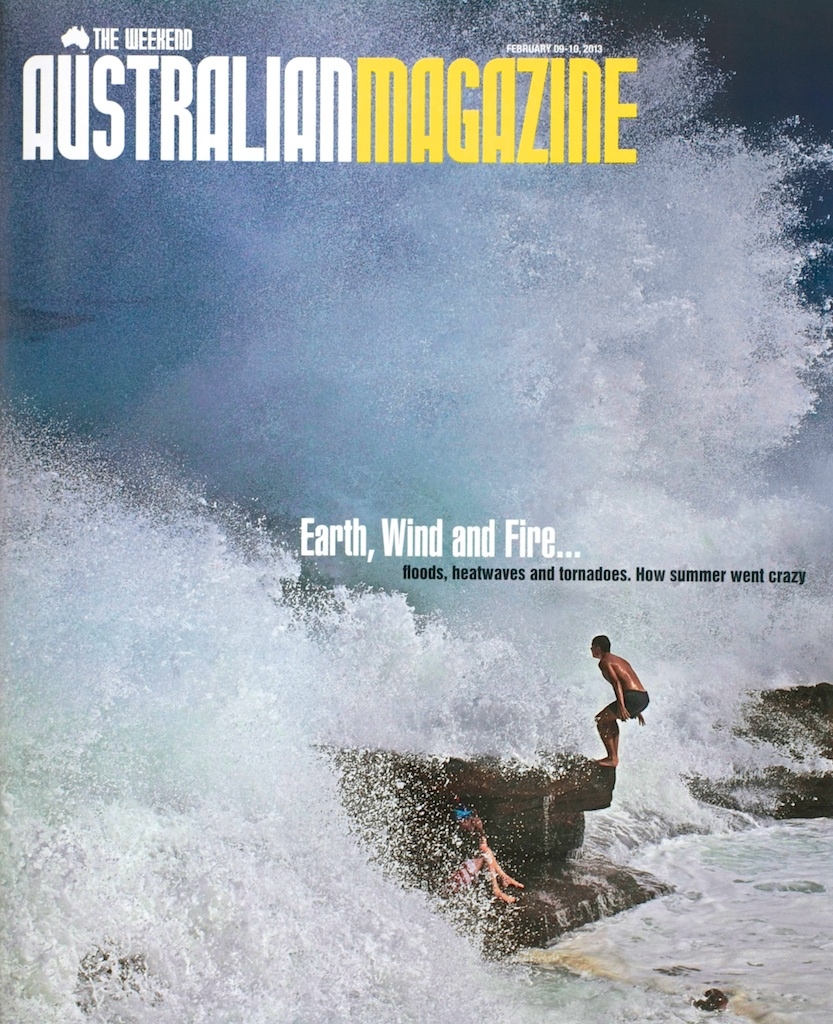The Weekend Australian

In the past four years an enormous amount of water has arrived in Lake Eyre basin, which covers almost one-sixth of the continent...
The eyre from up there
WHEN water comes to the desert, ancient, dry rivers run white; an inland sea turns red; green water surges across rusted earth and salt flat. Nature puts on a show. Transformed into unaccustomed colour, the stark and arid land fills with drama, mystery, reawakening. The dead heart comes alive. Seeds that have been dormant burst into plants that even the Aboriginal custodians struggle to recognise, and the once desiccated silence is punctuated by raucous water birds.
In the past four years an enormous amount of water has arrived in Lake Eyre basin, which covers almost one-sixth of the continent. Unleashing cyclones and floods, the La Nina weather pattern sent water into defunct northern river systems flowing south, filling the central basin and creating vast washes of yellow and purple in what Sydney photographer Peter Elfes describes as "a desert cocktail of lime, salt, algae, minerals and oxides. Just add water and shake and everything changes."
IN the same extraordinary manner in which it blossomed for the first time in almost 40 years, the inland sea that is Lake Eyre is now slowly, gently vanishing back into the heart of the continent.
It has been four years since the La Nina weather patterns across the northern and eastern parts of the nation pumped an inconceivable volume of water into the red centre, opening up the Diamantina, Georgina and Cooper Creek river systems as rarely before.
Now the desert rose is wilting after an unexpected, celebrated explosion of life and colour -- and as it slowly evaporates and retreats into the Great Artesian Basin, so do the hopes that the latest cyclonic weather to inundate parts of Queensland may once again pump life into a lake system that covers one-sixth of the driest continent on earth.
"We're hoping some of that rain will come down from Queensland way," said Adrian Kellow, the owner of the Lyndhurst Hotel-Motel that sits on
the junction of the Strzelecki and Oodnadatta tracks, 300km north of Port Augusta.
"It's been pretty bloody dry out here, and this may well be the last chance to get the water levels back up. That said, it's still pretty spectacular."
Mr Kellow said it would take months for any rains from Queensland to work their way into the lake system. He said from 2009 to last year, he had recorded an unprecedented amount of water in his rain gauge, but now the rainfall was back to what was considered usual for this time of year -- in other words, not much.
Photographer Peter Elfes visited the lake over three dry seasons and captured the evolving, ever-changing landscape from the air.
His remarkable collection of stills, contained in a book called The Green Desert, was taken while hanging out of a Robinson 44 helicopter scooting along at 140km/h and will be exhibited in Sydney's Royal Botanic Gardens next month.
According to the South Australian Department of Environment and Natural Resources, Lake Eyre now has a surface coverage of about 15 per cent. While there was minor flooding along Cooper Creek through Innamincka, about 450km up
the Strzelecki Track from the Lyndhurst pub, this would not have any impact on the lake's water levels.
"However, there is still about two months of potential cyclone activity in northern Australia," the department said.
"If cyclones do occur, this may contribute significant rainfall in to the system."
http://www.theaustralian.com.au/news/features/gallery-e6frg6z6-1226255738397?page=1



This would have to rate as one of the best photos I have every taken! So I suppose it is fitting that would be on the cover of the largest circulation magazine in the country. Even though it is a great picture to me this does not mean that it will automatically get national recognition. As we are all aware there is a process with these things and there are many many, outstanding images that are taken every day around the country by amateur and professional photographers that never gets seen by the public. For this reason i would like to acknowledge the editors and picture editors of the Weekend Australian Magazine who have been so supportive and brilliant to work with. Also I can't leave out the imaging dept. at News Limited, who have been so creative putting together one amazing spread after another and for always treating my images with respect by alloying the images to speak for themselves. I am very proud of this achievement and well I should be. These photos were chosen to feature this national interest story over tens of thousands of pictures that were submitted to News Limited by photo agencies around the country including from N.L. own library.

